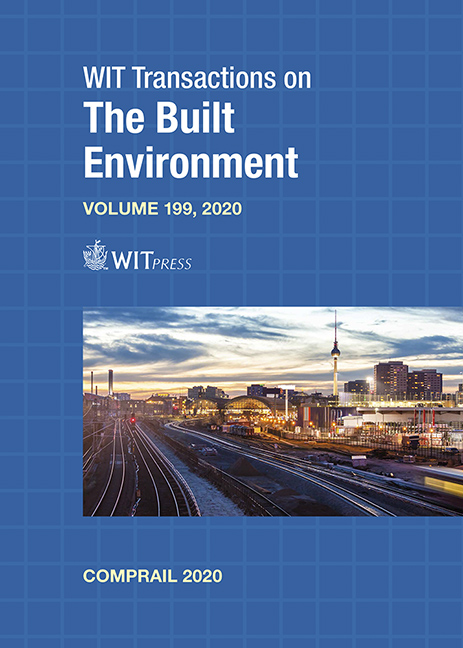VALIDATION OF A BRAKE MONITORING SYSTEM USING A MULTI-AXLE ROLLER-RIG
Price
Free (open access)
Transaction
Volume
199
Pages
12
Page Range
151 - 162
Published
2020
Paper DOI
10.2495/CR200141
Copyright
WIT Press
Author(s)
NICOLA BOSSO, MATTEO MAGELLI, NICOLÒ ZAMPIERI
Abstract
A widespread diffusion of monitoring systems is the key to improving safety and reliability of railway vehicles and to reducing maintenance costs by increasing the lifetime of structural and mechanical components. Several on-board devices have been conceived in recent years to detect faults on critical parts, by monitoring the real-time conditions of wheelsets, bearings, brakes, bogie, carbody, etc. These systems rely on powered sensor nodes, mounted on different parts of the vehicle, which acquire signals of interest and use proper algorithms to detect component faults or train derailments. Roller-rigs represent a good solution to develop and validate new monitoring devices with good repeatability of test conditions. The research group from Politecnico di Torino realized an innovative 1:5 scaled roller-rig, consisting of four wheelsets running on the same pair of rollers, originally used for investigations on wheel–rail adhesion. Then, minor changes were made to simulate and test a braking system monitoring device. Each wheelset is provided with a braking system, consisting of two brake discs and two brake callipers, while the rollers are powered using one AC brushless motor. A freight train pneumatic system is reproduced thanks to three electropneumatic regulators, which simulate the pressure in brake pipe, auxiliary reservoir and brake cylinder. The test bench and the motor drive are managed by an industrial PC using the software LabVIEW, allowing to perform braking operations of a real vehicle. Sensors are installed to measure wheelset speed, calliper temperature and pressures in the braking system. These signals are sent to an electronic control unit, which could be provided with a fault detection logic. The paper deals with the experimental setup of the bench and the preliminary results obtained by laboratory tests, which highlighted that the apparatus can be a reliable tool to develop new monitoring algorithms for train braking systems.
Keywords
roller-rig, railway monitoring, braking system, fault detection, railway brake plant simulation





